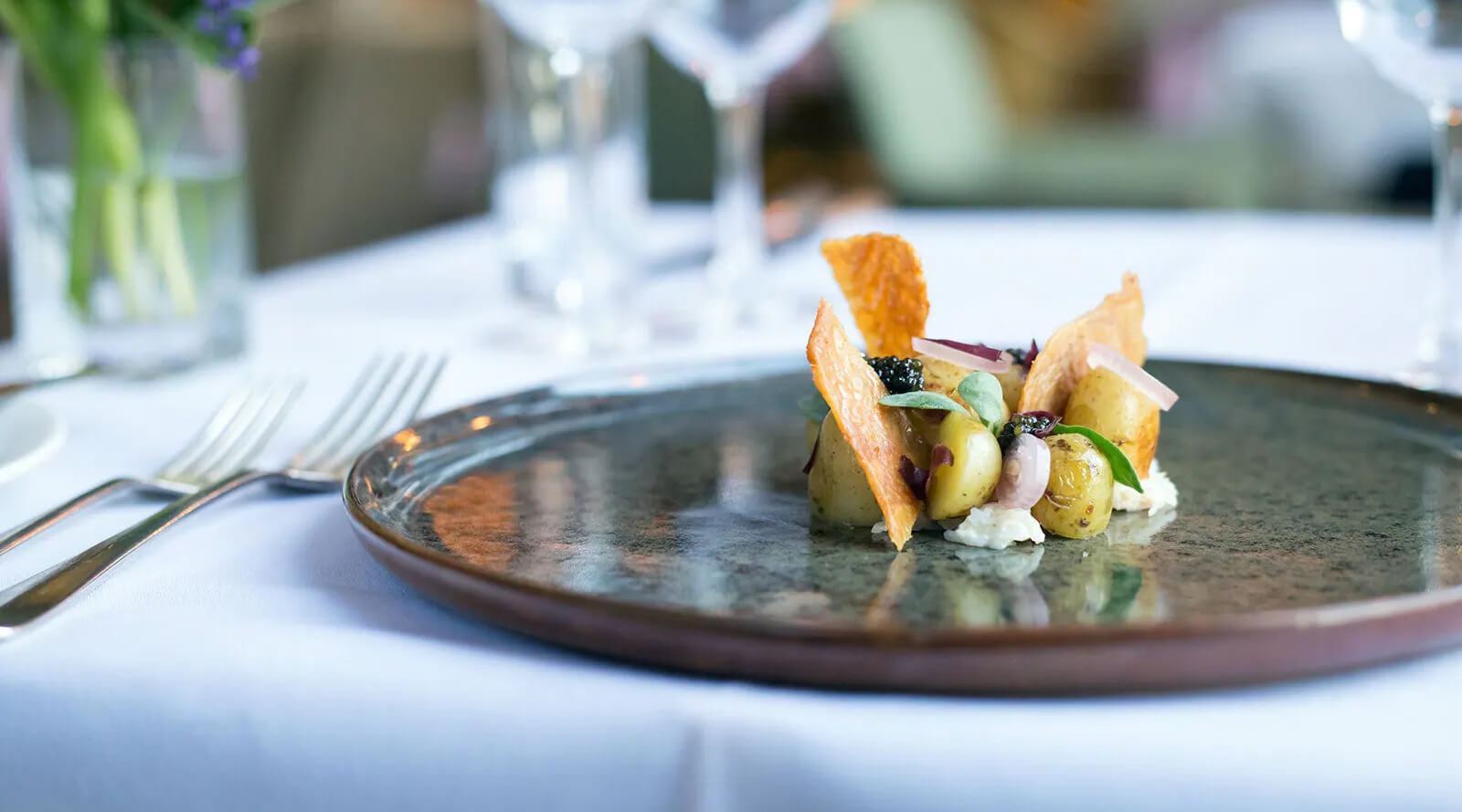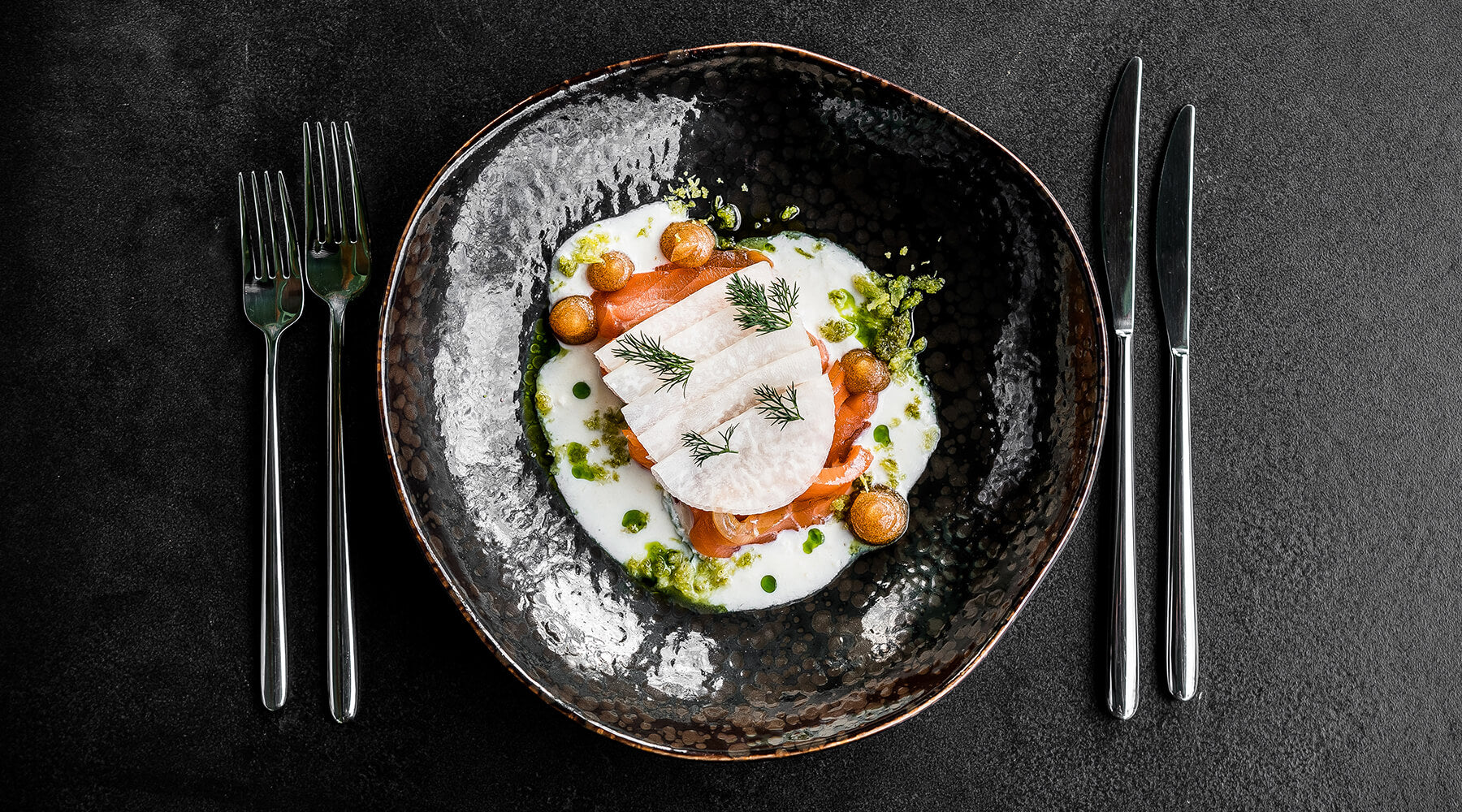Article: How Does Your Tableware Impacts the Way your Food Tastes?

How Does Your Tableware Impacts the Way your Food Tastes?
It's no secret that the atmosphere you eat in impacts your dining experience. However, did you know that even your plates and cutlery can affect how food tastes?
Studies have shown that your tableware's size, shape, color, and material can enhance or detract from the flavor. And while these effects may seem subtle, they have the potential to significantly alter your perception of taste.
In this blog post, I'll explore how your plates and utensils influence your perception of taste.
So, whether you're hosting a dinner party or simply want to improve your at-home dining, read on to discover how your tableware impacts the way your food tastes.
Material Matters
The type of material used in your tableware can significantly impact how your food tastes. Here are a few common materials and their effects:
Metal
Metal tableware, such as silverware, can have a slight metallic taste that can transfer to your food. This is especially true if the utensils are made of a lower-quality metal or if the utensils have scratches or nicks. Stainless steel is the best option for metal utensils as it is less likely to affect the taste of your food.
Glass
Glass tableware is non-porous, which means it won't absorb any flavors or odors from your food. This makes it an excellent choice for any food, from sweet to savory.
Ceramic
Ceramic tableware can add a subtle earthy flavor to your food, which can be desirable for some dishes, such as stews and soups. However, it's important to note that not all ceramic tableware is created equal. Some glazes can contain lead or other harmful chemicals, so choosing ceramic tableware from a reputable source is essential.
Plastic
Plastic tableware is often inexpensive and convenient, but it can impact the taste of your food. Cheap plastic utensils can give your food a chemical taste, and plastic plates and cups can sometimes have a slight plastic smell that can also transfer to your food. It's best to avoid plastic tableware whenever possible.
Color Psychology
Believe it or not, the color of your tableware can impact how you perceive your food's taste. It's all thanks to a little thing called color psychology.
For example, red tableware can make your food look more appetizing and can increase your appetite. So, if you're trying to eat a little less, you might want to swap out those red plates for something less stimulating.
On the other hand, blue tableware can have the opposite effect. It's been shown to reduce appetite and make food appear less appealing. So, if you're trying to eat healthier, a blue plate might be just what you need.
Yellow tableware is another interesting choice. It's been linked to happiness and can make your food appear more vibrant and lively. So, if you're feeling down, a yellow plate might just cheer you up.
Of course, these effects are subtle, and everyone's perception differs. But it's worth considering the impact of color when choosing your tableware. Who knows, it might just make your food taste even better.
Shape and Size
The shape and size of your plate can also influence how you perceive the taste of your food. Here are a few examples:
Plate Size
Did you know that the size of your plate can affect how much you eat? Studies have shown that people eat more when served larger portions on larger plates. So, if you're trying to watch your waistline, consider using smaller plates to help control your portions.
Bowl Shape
The shape of your bowl can also impact the taste of your food. A wider, shallower bowl can help distribute the flavors of your dish, allowing you to taste all the different components. On the other hand, a deeper, narrower bowl can concentrate the flavors, making each bite more intense.
Utensil Shape
The shape of your utensils can also affect how your food tastes. For example, a spoon with a deeper bowl can hold more liquid, allowing you to savor each bite of soup or stew. A fork with longer tines can be useful for picking up smaller pieces of food, like grains of rice or peas.
Glass Shape
The shape of your glass can also impact your drink's taste. A wider, shorter glass can help release the aromas of your drink, making it taste better. Additionally, thicker glass can help insulate your drink, keeping it colder for longer.
Texture
The texture of your tableware can also impact the way your food tastes. Like with materials, certain textures can enhance or detract from the flavor and overall dining experience.
For example, consider the texture of a rough clay bowl versus a smooth porcelain one. The rough texture of the clay can create more friction between the food and the bowl, which can enhance the flavors and textures of the dish. On the other hand, a smooth porcelain bowl might make the dish feel less interesting and flavorful.
Another example is with utensils. Using a metal spoon versus a wooden spoon can create a different tactile experience when eating your food. The metal spoon can give a cool, crisp sensation, while a wooden spoon can give a warmer, more natural sensation.
When it comes to cups and glasses, the texture of the surface can impact the way drinks taste. For example, a glass with a smooth rim can make the drink feel smoother and more accessible, while a glass with a rougher rim can create a more intense drinking experience.
The texture of your tableware can have a significant impact on the way your food tastes. It's essential to consider the texture of your tableware when selecting the right pieces for your dining experience and to experiment with different textures to find what works best for each dish.
Conclusion
No matter what type of food you're eating, the presentation plays a vital role in how it tastes. From materials to colors to shapes and sizes, many factors can influence how your food tastes and the overall dining experience.
By selecting the right tableware pieces, you can create a more enjoyable and memorable meal. So don't hesitate to experiment with different materials, colors, shapes, sizes, and textures to find the perfect combination for your next meal.


